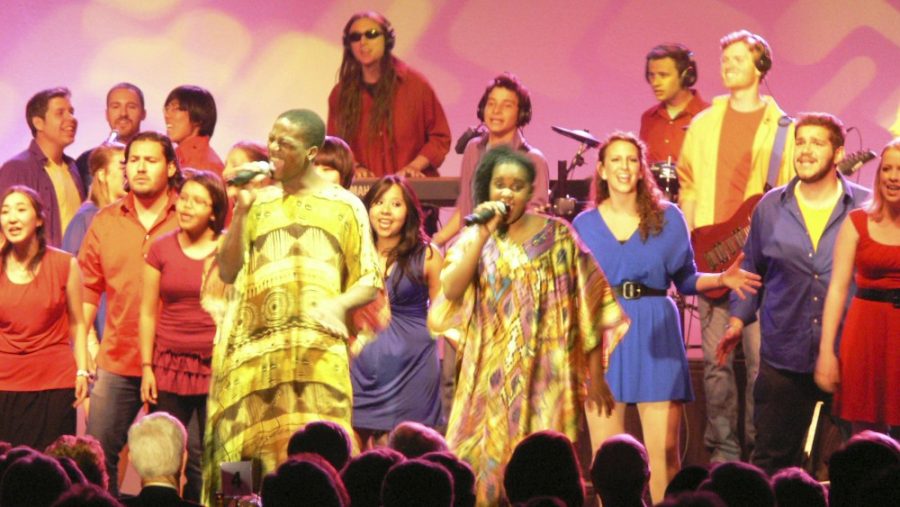Returning to Tucson where it was founded nearly 50 years ago, Up with People played to a sold-out crowd of 700 at the UA on March 16. The gala reflected the social awareness performance troupe’s roots while touching on the change it has seen over the years.
Up with People began as a way for the progressive youth of the turbulent ‘60s era to focus energy on education and positive international change through dance and song instead of protesting.
The international organization has promoted cultural education and understanding through entertainment, garnering a lot of attention after performing at four Super Bowl halftime shows. Up with People has also previously performed at Carnegie Hall and for royalty such as the King of Spain and Queen of Sweden.
In one night, the troupe raised more than $100,000 to benefit the new UA Special Collections archive dedicated to Up with People. Korey Riggs, Up with People Gala event organizer and cast alumnus, called the performance “an explosion of high-energy music and dance” that celebrated the organization’s longevity in education and service.
“I felt the event was a complete success. Everyone enjoyed themselves, the fundraising goal was met and people left inspired,” Riggs said.
Mexico’s first lady, Margarita Zavala de Calderón, opened the night with a special video message that paid tribute to Up with People. Guest speaker Cpt. Eugene Cernan, the last man to walk on the moon, introduced a performance by Up with People. Grupo Danza Xunutzi, a folklorico dance group, performed, with musical interludes by classical guitarists and a string quartet.
Members of Up with People hope the gala will inspire more students to apply and become a part of Up with People and its legacy.
Special Collection’s archives include photographs of past cast members, song arrangements, musical scores, and most notably, a piece of the Berlin Wall, as well as documents and histories from the founder and Chairman Emeritus J. Blanton Belk and his wife, Betty.
The Up with People tours open members up to different cultures by staying with host families and meeting youths from different socioeconomic backgrounds. This, Riggs said, allows them to get a broader perspective of the world, especially when looking at news and war differently and living with people from various backgrounds. Traveling also makes students more comfortable and flexible, Riggs said.
People interested in the organization can use Up with People as a “bridge of understanding across borders, cultures, and races” to grow in their fields of study, Riggs said. It calls for today’s international youth leaders to promote a global perspective with service and understanding.
Up with People students range in age from 17 to 29 and can apply even without singing or dancing experience. What is quite remarkable, Riggs said, is that the students arrange everything.









